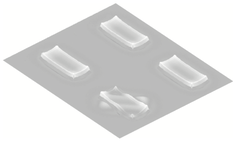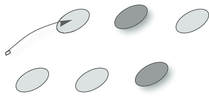A brief overview
Guiding perception
Eye movements stand at the basis of our interactions with the world around us. Whether it is about finding your keys or making a peanut butter sandwich, eye movements lead the way. I've dedicated about 8 years to studying the spatial and temporal characteristics of (saccadic) eye movements. Saccadic eye movements, or simply saccades, are ballistic movements of the eye that shift the focus of our gaze from one location to the other. These movements occur in some tens of milliseconds and their course is set even before their execution begins. When we are active we make about 3 to 4 saccades per second. The purpose of these saccades is to shift the high resolution center of our retina to locations that are in line with our current goals. After the eye lands it typically holds a relative stable gaze for a period between 200 and 300 ms. During this period visual input is processed: at the center of vision at a high resolution, while in the periphery input is sampled at a lower resolution. Based on input from the periphery upcoming saccade destinations are determined. What determines these upcoming destinations? And how can we best model the underlying system? Such questions have driven my research. Below I've outlined a small selection of projects that have come by over the years.
Highlighted Projects
|
Background
How well we can distinguish an object, depends on its surroundings. In many studies these surroundings are manipulated by changing properties of surrounding objects. However, despite being an intricate part of the surroundings, the background objects stand on is given little attention. Here rather than manipulating the properties of the surrounding objects, we varied the background to show that its properties are also highly relevant.
|
For a full publication list (with PDF links) go to the publications page. Or check out google scholar profile.



